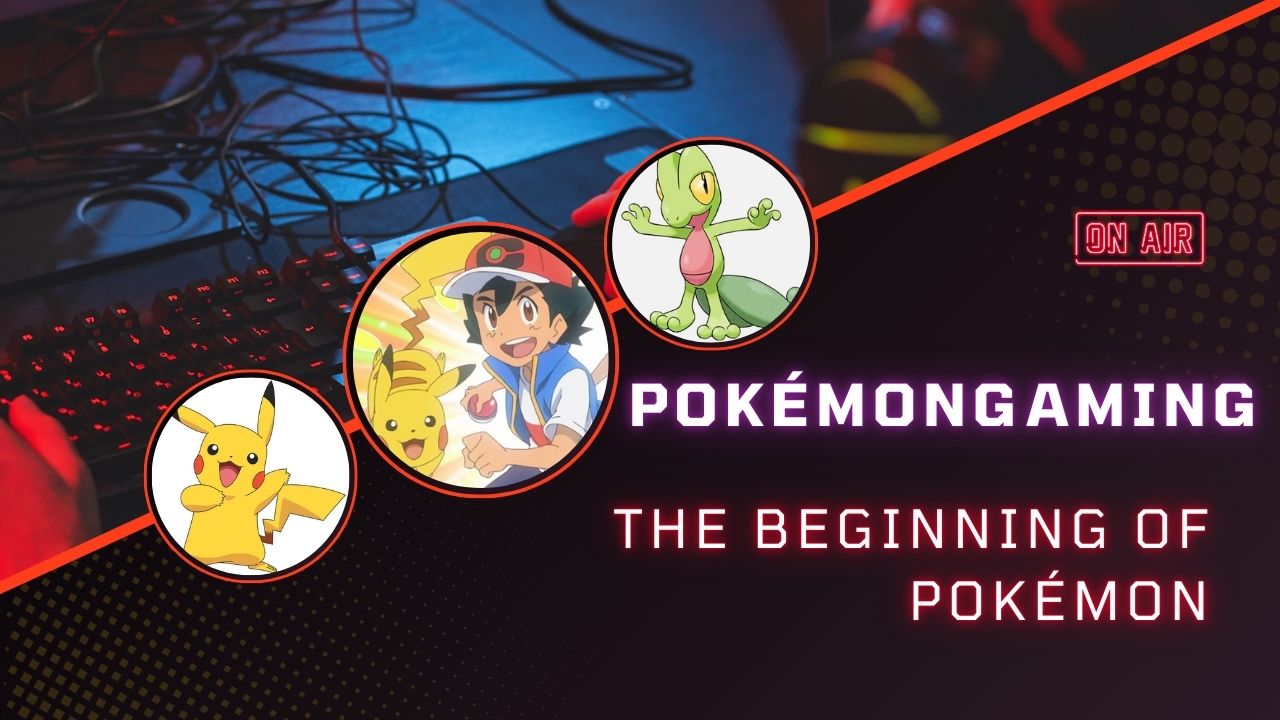
The Evolution of Pokémon Games: A Journey Through Generations
Outline:
- Introduction to Pokémon Games
- The Legacy of Pokémon Games
- A Brief History of Pokémon Franchise
- Generation I: The Beginning of Pokémon
- Pokémon Red, Blue, and Yellow
- Key Features of Generation I
- Generation II: Pokémon Gold and Silver
- Introduction of Day/Night Cycle
- New Pokémon and Evolutions

- Generation III: Ruby, Sapphire, and Emerald
- Introduction of Double Battles and Abilities
- Enhanced Graphics and Gameplay
- Generation IV: Diamond, Pearl, and Platinum
- Online Trading and Battling
- Sinnoh Region and Its Legendary Pokémon
- Generation V: Black and White
- A Shift to Story-Driven Gameplay
- Introduction of Triple Battles
- Generation VI: X and Y
- Pokémon Goes 3D
- Mega Evolution and the Kalos Region
- Generation VII: Sun and Moon
- Regional Variants and Z-Moves
- Alola Region’s Unique Setting
- Generation VIII: Sword and Shield
- Dynamaxing and Gigantamaxing
- Introduction of the Wild Area
- Pokémon Legends: Arceus – A Fresh Take
- Open-World Exploration and Real-Time Battles
- Setting the Stage for Future Pokémon Games
- The Pokémon Spin-Offs
- Pokémon Go: The Mobile Revolution
- Mystery Dungeon, Pokémon Snap, and Other Titles
- Multiplayer and Competitive Play
- The Rise of Online Battling
- Pokémon’s Impact on Esports
- Pokémon Home and Connectivity
- Transferring Pokémon Across Generations
- How Pokémon Home Changed the Way We Play
- Future of Pokémon Games
- Speculations for Generation IX and Beyond
- Innovations Fans Want to See
- Conclusion
- FAQs
Introduction to Pokémon Games
Few gaming franchises have captured the hearts of millions like Pokémon. From its humble beginnings on the Game Boy to its innovative titles on the Nintendo Switch, Pokémon games have continually evolved while staying true to their core principles: collecting creatures, training them, and battling. In this article, we’ll journey through the history of Pokémon games, touching on the evolution of gameplay mechanics, graphics, and the impact it has had on the gaming world.
The Legacy of Pokémon Games
Launched in the mid-90s, Pokémon quickly became a cultural phenomenon. What started as a simple game about catching and battling creatures evolved into a multimedia empire, with games being at the core of its popularity. But how exactly have Pokémon games evolved over the years? Let’s explore the progression through each generation.
Generation I: The Beginning of Pokémon
Pokémon Red, Blue, and Yellow
The first generation of Pokémon games debuted in 1996 with Pokémon Red and Blue (or Green in Japan), followed by Yellow. These titles introduced players to the world of Pokémon, where they could catch 151 unique creatures and battle their way to becoming the Pokémon Champion. Set in the Kanto region, these games became instant classics.
Key Features of Generation I
- Turn-Based Battles: Players could choose four moves for each Pokémon, with battles relying heavily on strategy.
- Trading and Battling with Friends: Using the Game Boy link cable, players could trade Pokémon with friends, which was a revolutionary feature at the time.
Generation II: Pokémon Gold and Silver
Following the massive success of Generation I, Pokémon Gold and Silver introduced new mechanics and features that deepened the gameplay.
Introduction of Day/Night Cycle
Gold and Silver introduced the concept of time, where different Pokémon appeared depending on the time of day. This addition gave the game a more immersive feel and added layers of strategy to catching specific Pokémon.
New Pokémon and Evolutions
With the addition of 100 new Pokémon, including fan favorites like Umbreon and Espeon, Generation II also introduced the concept of breeding and baby Pokémon, further expanding the possibilities for players.
Generation III: Ruby, Sapphire, and Emerald
Introduction of Double Battles and Abilities
Generation III brought forth double battles, where trainers could use two Pokémon at the same time. Additionally, Pokémon were given abilities—passive traits that added more depth to the game.
Enhanced Graphics and Gameplay
This generation featured improved graphics and introduced a new region, Hoenn, complete with vibrant colors and diverse landscapes, offering players a more visually appealing experience.
Generation IV: Diamond, Pearl, and Platinum
Online Trading and Battling
With the release of Diamond and Pearl on the Nintendo DS, Pokémon entered the era of online gaming. Players could trade and battle online, making the experience much more global.
Sinnoh Region and Its Legendary Pokémon
Set in the Sinnoh region, this generation introduced legendary Pokémon like Dialga and Palkia, while refining the gameplay with new mechanics like the Physical/Special split.
Generation V: Black and White
A Shift to Story-Driven Gameplay
For the first time, Generation V focused heavily on narrative, offering players a more mature story with deeper character development. Pokémon Black and White also introduced 156 new Pokémon, making it the largest roster update to date.
Introduction of Triple Battles
Generation V also experimented with new battle formats like Triple Battles and Rotation Battles, further diversifying the combat mechanics.
Generation VI: X and Y
Pokémon Goes 3D
Pokémon X and Y marked the franchise’s jump to 3D graphics on the Nintendo 3DS, offering a fresh new look while retaining its classic gameplay style.
Mega Evolution and the Kalos Region
A new mechanic, Mega Evolution, allowed certain Pokémon to evolve temporarily during battles, adding a new layer of strategy. Set in the Kalos region, players could explore a world inspired by France, with stunning landscapes and architecture.
Generation VII: Sun and Moon
Regional Variants and Z-Moves
Pokémon Sun and Moon brought regional variants to the game, introducing unique forms of existing Pokémon. These variants not only looked different but also had different typings. Z-Moves, powerful one-time attacks, were also introduced, offering players a new battle strategy.
Alola Region’s Unique Setting
Set in the tropical Alola region, this generation moved away from the traditional gym structure and focused on island trials, offering a fresh approach to the Pokémon journey.
Generation VIII: Sword and Shield
Dynamaxing and Gigantamaxing
With the release of Pokémon Sword and Shield on the Nintendo Switch, a new mechanic called Dynamaxing was introduced, allowing Pokémon to grow to gigantic sizes in battles. Some Pokémon also had unique Gigantamax forms, giving them special moves and designs.
Introduction of the Wild Area
The Wild Area was a massive open-world segment where players could freely explore, encounter wild Pokémon, and interact with other players. This area added a more dynamic and interactive aspect to the game.
Pokémon Legends: Arceus – A Fresh Take
Open-World Exploration and Real-Time Battles
Pokémon Legends: Arceus broke the mold of traditional Pokémon games by offering an open-world experience. Players could explore the ancient Hisui region, capturing Pokémon in real-time and engaging in battles in a seamless, immersive environment.
Setting the Stage for Future Pokémon Games
This game has set a precedent for future titles, and many fans hope that future generations will continue to explore this blend of open-world exploration and real-time action.
The Pokémon Spin-Offs
Pokémon Go: The Mobile Revolution
Released in 2016, Pokémon Go brought the Pokémon experience to mobile devices, using augmented reality (AR) to let players catch Pokémon in the real world. Its success brought a resurgence in Pokémon’s popularity and attracted a broader audience.
Mystery Dungeon, Pokémon Snap, and Other Titles
In addition to the mainline games, spin-off titles like Pokémon Mystery Dungeon and Pokémon Snap have offered fans new ways to experience the world of Pokémon. These games focused on different genres, such as dungeon crawling and photography, keeping the franchise fresh and exciting.
Multiplayer and Competitive Play
The Rise of Online Battling
With the advent of online gaming, Pokémon’s multiplayer component has flourished. From friendly matches to competitive tournaments, online battling has become an integral part of the Pokémon experience.
Pokémon’s Impact on Esports
Over the years, Pokémon has carved out a space in the competitive gaming scene. With yearly tournaments and global events, it continues to be a major player in esports.
Pokémon Home and Connectivity
Transferring Pokémon Across Generations
Pokémon Home allows players to transfer Pokémon from previous games, ensuring that their favorite companions can journey with them across generations. This feature has helped create a sense of continuity within the games.





